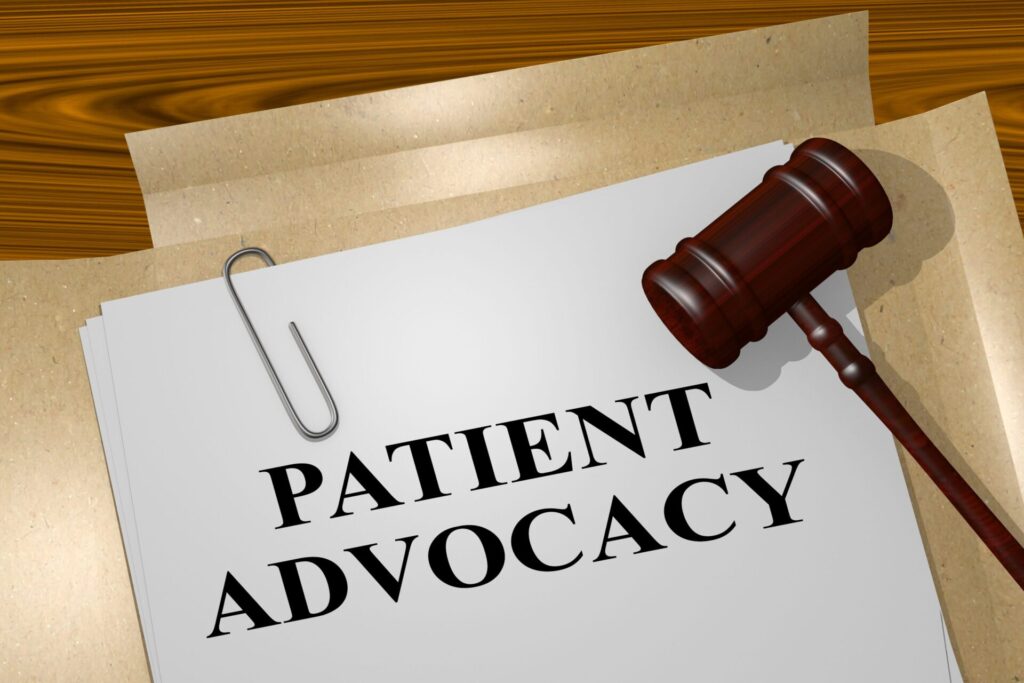Anesthesia errors, while less commonly discussed than other medical mistakes, represent a significant concern in the medical field. These errors, which can range from incorrect dosing to failure in monitoring patient responses, pose serious risks to patient safety. Despite advancements in medical practices, the prevalence of such errors remains a pressing issue, often leading to severe health complications, or in extreme cases, fatalities.
Understanding the legal options for victims of anesthesia errors is crucial. Maneuvering through the intricate terrain of medical malpractice demands in-depth knowledge and a nuanced understanding. This is where the role of a competent law firm becomes vital.
Accomplished legal professionals in this field excel at unraveling the complexities of such cases, providing invaluable support to victims seeking justice and compensation. Their engagement not only assists individuals impacted by anesthesia errors but also plays a role in elevating the overall standards of care in medical practices.
👉Also Read: Surgical Errors and Wrong Patients: Understanding Your Rights in Medical Malpractice Lawsuits
Understanding Anesthesia Errors and Their Implications

Before delving into the potential errors associated with anesthesia administration, it’s crucial to grasp the various types of anesthesia employed in surgical and procedural settings. There are four primary categories:
- General Anesthesia
- Regional Anesthesia
- Sedation (Monitored Anesthesia Care)
- Local Anesthesia
Patients may, in some cases, have the opportunity to choose the type of anesthesia they prefer. Your physician anesthesiologist will discuss these options, considering the nature of the operation or procedure, your medical history, and other relevant factors. It is crucial to have a clear understanding of the selected anesthesia type to make informed decisions and mitigate potential risks.
The most common anesthesia errors include:
- Incorrect Dosage: Administering too much anesthesia or too little anesthesia, leading to either inadequate pain suppression or an overdose risk.
- Improper Monitoring: Failing to adequately monitor the patient’s vital signs during surgery/medical procedure, which can result in unnoticed complications.
- Delayed Delivery: Delays in administering anesthesia can lead to unnecessary pain or distress for the patient.
- Failure to Recognize Complications: Inadequate responses to anesthesia-related complications, such as allergic reactions, can have severe consequences.
- Equipment Failure: Malfunctioning or improperly used equipment can lead to incorrect drug delivery or monitoring.
Administering anesthesia involves intricate processes, requiring precision and careful monitoring. Anesthesiologists must consider various patient-specific factors, such as medical history, age, and other medications, to tailor the anesthesia plan. The risks involved in this process are significant, and any error, whether due to negligence, inexperience, or equipment failure, can jeopardize patient safety.
To minimize the risk of anesthesia errors, healthcare systems employ various safety measures, including standardized protocols, checklists, and ongoing training for anesthesia professionals. Communication within the healthcare team or concerned medical professional is essential to ensure that all relevant information about the patient is shared and considered during the anesthesia process.
Identifying Medical Malpractice in Anesthesia Cases
Key ways patient safety can be compromised include:
- Inadequate Preoperative Evaluation: Failing to assess the patient’s medical history or potential risks can lead to unforeseen complications during anesthesia administration.
- Poor Communication: Miscommunication among medical staff about patient specifics or anesthesia requirements can result in critical errors.
- Faulty Equipment Usage or Maintenance: Using malfunctioning equipment or failing to properly maintain anesthesia machinery can have dire consequences.
- Lack of Vigilance During Surgery: Inattentiveness to changes in patient vitals or signs of distress during surgery can delay the response to complications.
The potential complications arising from anesthesia-related malpractice are varied and serious. They include brain damage due to hypoxia, stroke, heart attack, or even death, particularly when the patient’s vitals are not properly monitored. Post-operative complications like chronic pain, nerve damage, or anesthesia awareness – where a patient remains conscious during a surgical procedure but is unable to move – can also occur.
The Role of The Pagan Law Firm in Handling Anesthesia Error Cases
The Pagan Law Firm holds a crucial role in the field of medical malpractice lawsuits, especially when it comes to cases involving anesthesia errors. With our commitment to clients and a deep understanding of medical procedures, we stand out in navigating the complexities of anesthesia-related malpractice. Our extensive experience equips us to handle the nuances of such cases, from pinpointing deviations in standard care to explaining the impact of anesthesia errors on patients.
When clients come to us, we guide them through a careful process of consultation and legal action. We thoroughly review the medical details of each case, ensuring we grasp and document every aspect of the anesthesia error.
Our collective knowledge allows us to plan effectively, tailoring our legal approach to the specific circumstances of each case. Rooted in our commitment to justice and patient safety, this process provides clients with a thorough and understanding path to address the harm they’ve experienced due to anesthesia errors.
Legal Strategies for Confronting Anesthesia Errors
Confronting anesthesia errors through legal means involves a series of strategic steps, crucial for filing a successful medical malpractice claim. Initially, the process begins with a detailed filing of the claim, where the specific type of anesthesia error and its consequences are clearly outlined. This is a critical step, as it sets the foundation for the legal argument.
Building a case against anesthesia errors requires meticulous collection and analysis of evidence. This includes gathering comprehensive medical records, operating room notes, anesthesia dosage logs, and patient health history. Such evidence is vital to demonstrate how the standard of care was breached and to establish a direct link between the anesthesia error and the patient’s harm.
A thorough investigation is paramount in these cases. Medical malpractice lawyers often conduct extensive reviews of medical procedures and protocols followed, seeking to uncover any negligence or oversight. The role of expert testimony becomes critical here.
Medical experts in anesthesiology are consulted to provide insights into the standard practices and to identify deviations that might have led to the error. Their testimony can offer a credible and detailed explanation of how the error occurred and the impact it had on the patient’s health.
Throughout this process, the medical malpractice attorney strategizes on the best course of action, whether negotiating settlements or preparing for trial. This comprehensive approach, emphasizing detailed investigation and expert testimony, is essential in effectively confronting anesthesia errors and upholding the rights and safety of patients.
Advocating for Patient Rights and Safety

Advocating for patient rights and safety in the context of anesthesia errors is a multifaceted endeavor that underscores the significance of preventing complications related to anesthesia. The paramountcy of patient safety in these scenarios cannot be overstated, as the risks associated with anesthesia mistakes can be profound, ranging from minor reactions to life-threatening consequences.
A key aspect of safeguarding patient safety lies in the proper monitoring of patients under anesthesia. Continuous and vigilant observation of the patient’s vital signs and responsiveness during and after the administration of anesthesia is crucial. This monitoring helps in promptly identifying and addressing any adverse reactions or complications, thereby reducing the risk of long-term harm.
Equally important is the role of effective communication within the medical team. A clear, concise, and accurate exchange of information regarding the patient’s medical history, allergies, and the specifics of the anesthesia plan is essential. This communication ensures that every team member is aware of the patient’s condition and the approach required, minimizing the chances of errors due to miscommunication or lack of information.
👉Also Read: Preserving Trust in Healthcare: Fighting Back Against Surgical Errors
The Legal Process and Possible Outcomes
The legal process for addressing anesthesia errors in medical malpractice lawsuits involves several key stages, each crucial for achieving justice and compensation for affected patients:
- Filing a Lawsuit: The process begins with the filing of a lawsuit, where the specifics of the anesthesia error and its impact on the patient are formally documented.
- Discovery Phase: Both parties engage in the discovery phase, exchanging evidence, medical records, and witness testimonies relevant to the case.
- Expert Testimony: Medical experts in anesthesiology may be brought in to provide insights and opinions on standard care practices and how they were breached.
- Negotiations and Settlements: Before proceeding to trial, there may be negotiations for a settlement. This stage can result in compensation for the victim without the need for a court trial.
- Trial: If a settlement is not reached, the case goes to trial, where evidence is presented before a judge or jury for a verdict.
Potential compensations and settlements for victims of anesthesia malpractice include:
- Medical Expenses: Covering the costs of additional medical care resulting from the error.
- Lost Wages: Compensation for any lost income due to the patient’s inability to work.
- Pain and Suffering: Addressing the physical and emotional distress caused by the error.
- Punitive Damages: In some cases, where negligence is particularly egregious.
Medical professionals and healthcare facilities found culpable of negligence may face substantial consequences:
- Professional Repercussions: Including loss of license or disciplinary actions.
- Financial Penalties: Substantial fines or compensation payouts.
- Reputational Damage: Impacting the trust and credibility of the individual or institution.
- Mandatory Changes in Practice: Implementing new protocols or training to prevent future errors.
These legal procedures and potential outcomes play a crucial role in ensuring accountability and encouraging adherence to the highest standards of medical care, particularly in the administration of anesthesia.
Raising Awareness and Promoting Preventive Measures
Preventive measures are key in minimizing the occurrence of anesthesia-related complications. These include:
- Rigorous training and continuing education for anesthesiologists and other medical staff involved in administering anesthesia.
- Implementation of comprehensive pre-operative assessments to identify any patient-specific risks.
- Adoption of advanced monitoring technology during surgeries to ensure immediate detection of any adverse reactions to anesthesia.
- Strict adherence to protocols for dosage and equipment usage, reducing the likelihood of human error.
Empowering patients also plays a vital role in this process. Patients should be informed about their rights in the healthcare setting, including the right to understand the risks and benefits of anesthesia. They should be encouraged to ask questions and express any concerns they may have about their care.
Additionally, patients should be aware of the steps to take in the event of experiencing or suspecting medical malpractice. This empowerment not only makes patients active participants in their healthcare but also contributes to a culture of safety and accountability in medical practices.
👉Also Read: Anesthesia Errors: What To Know About Your Medical Malpractice Case
Seeking Justice in Anesthesia Error Cases: Your Ally in New York City
The significance of legal action in confronting anesthesia errors and medical malpractice cannot be understated. It serves as a crucial means of not only seeking justice for those harmed but also as a deterrent against future negligence in medical practices.
If you or a loved one has experienced the consequences of anesthesia errors or medical errors, we strongly encourage you to take the proactive step of seeking legal counsel. This is vital in addressing and rectifying the wrongs you have endured.
The Pagan Law Firm, proudly serving in New York City, stands as a steadfast ally in these endeavors, dedicated to championing the cause of victims of anesthesia errors. Our experienced legal professionals are here to guide you through the process, ensuring your voice is heard and justice is pursued. Don’t hesitate to reach out – your well-being is our priority.

